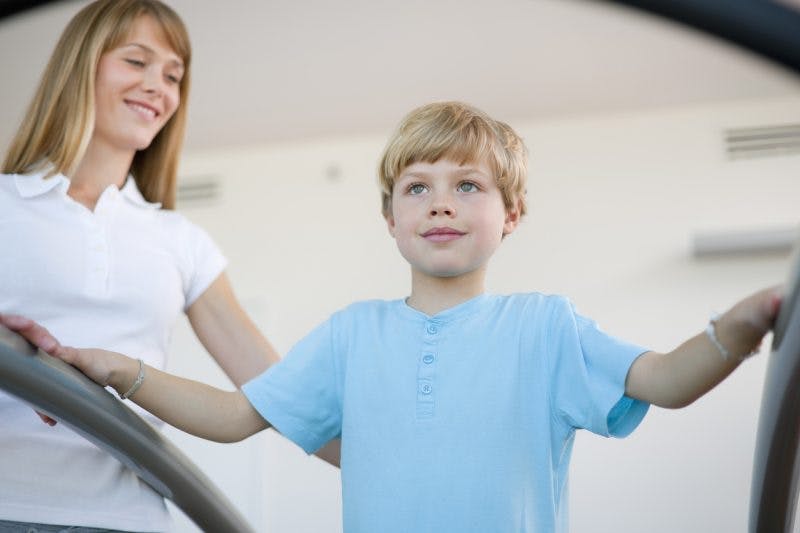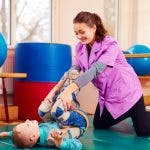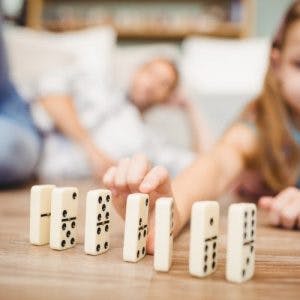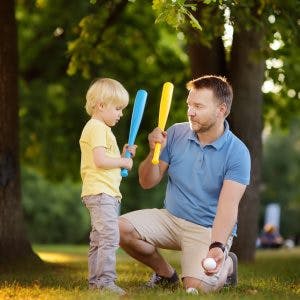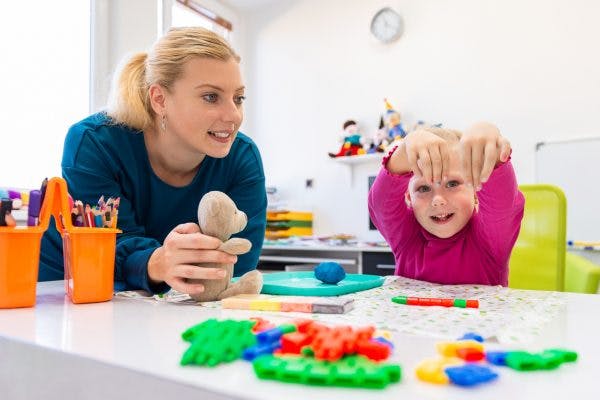Can people with cerebral palsy use gait training to improve their walking abilities?
Almost any skill can be improved if you practice it enough, and walking is no exception.
This article will explain how individuals with cerebral palsy can boost their mobility with gait training.
What is Gait Training?
Gait training is a form of physical therapy that specifically focuses on improving one’s walking ability.
It may involve different types of interventions including over ground gait training and treadmill-based gait training.
In treadmill-based training, a harness will support your body weight to reduce the amount of pressure placed on the joints. This allows children with cerebral palsy to focus on walking with correct form. Walking speed and the amount of supported body weight can be adjusted so that the client is continuously being challenged.
Individuals use different types of walking aids (like walkers or crutches) and learn to become less dependent on them as their walking abilities improve.
Gait training focuses on improving functions like:
- walking speed
- walking endurance
- gross motor function
- step length
Gait Training for Cerebral Palsy
Due to abnormal muscle tone, irregular walking patterns (like toe walking, crouch gait, and scissor gait) are common among individuals with cerebral palsy.
Depending on the type of cerebral palsy you have, muscles may involuntarily tighten, loosen, or fluctuate between the two extremes. Difficulties with balance, posture, and body control may also contribute to an abnormal gait.
Although the brain damage that caused cerebral palsy will not worsen over time, symptoms of cerebral palsy may progress if not properly managed.
Severe spasticity (involuntary muscle contractions) may become painful and drastically restrict movements. In extreme cases, individuals may lose the ability to walk altogether.
Therefore, gait training plays an essential role in helping people with cerebral palsy manage their symptoms and maximize their mobility.
The Power of Habit
Cerebral palsy is caused by damage to the developing brain, which means that most people with CP have experienced their motor impairments since birth or very early childhood.
Children with CP learn how to walk with their motor impairments, and because they compensated by walking this way, it develops into a habit.
Those with mild cerebral palsy may usually demonstrate how to walk correctly. However, they will not continue to do so because it feels uncomfortable.
Habits are extremely difficult to replace because the neural pathways for those actions have been strengthened through repetition.
The stronger your neural pathways are for a specific action, the less thinking is required and the more instinctive the action becomes.
Does Gait Training for Cerebral Palsy Work?
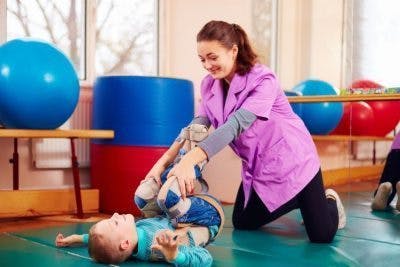
The goal of gait training for cerebral palsy is to replace an abnormal gait with an improved one by managing spasticity and strengthening a new set of neural pathways through task-specific, high-repetition training.
Spasticity in the legs can be managed through:
- Botox or other medications that temporarily prevent muscle contractions
- Stretching (to lengthen tight muscles)
- Orthotics (to promote proper musculoskeletal alignment and lightly stretch tight muscles)
- Surgery (for manual muscle lengthening or to cut hyperactive nerve fibers)
Spasticity management will eliminate high muscle tone, but gait training is necessary to learn how to walk without spasticity.
As you determine how to adjust your center of gravity and continue to practice, the new movements will become more comfortable.
So how do you strengthen neural pathways? By promoting neuroplasticity.
Neuroplasticity
Neuroplasticity is the brain’s ability to rewire itself and make new connections. This allows functions affected by damage to the brain to be recovered.
Every movement you make fires a unique set of neural pathways, and the more you stimulate them, the stronger they become.
Individuals with CP learn how to walk while their brains are still recovering, and spasticity develops as a result of muscle imbalances caused by brain damage.
Dr. Karen Pape explains in The Boy Who Could Run But Not Walk that by 3 or 4 years old, that brain damage has stabilized to the extent it can, and new movements will stimulate neural pathways in undamaged areas of the brain.
Therefore, by asking a child to run instead of walk, they are using a whole new set of neural pathways that is not affected by spasticity.
The brain is extremely adaptive and functions based on demand. Neural pathways are weakened from disuse and strengthened through repetition. Think ‘use it or lose it’ and ‘use it to improve it’.
Gait Training and Virtual Reality
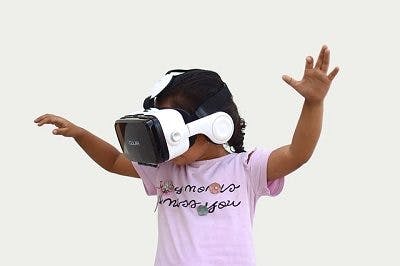
One of the major differences between gait training for adults vs. children is that children don’t fully understand the purpose of the training.
They understand that gait training is meant to improve their walking, but they don’t know how to set long-term goals because that part of their brain (the prefrontal cortex) doesn’t begin to develop until adolescence.
Therefore, it is more difficult for children to stay motivated, goal-oriented, and perform the repetitions they need.
Walking can easily become mechanical and tedious. Virtual reality may make gait training more fun and engaging so that individuals can perform the repetitions they need through the power of distraction.
This study found that virtual reality can significantly improve gait performance in children with cerebral palsy by providing challenges in a safe, controlled environment with immediate multisensory feedback.
Children were quicker to adjust their movements when feedback was game-driven.
Cerebral Palsy and Gait Training: Key Points
Motor impairments related to cerebral palsy like abnormal muscle tone and poor balance may significantly affect one’s ability to walk.
Thanks to neuroplasticity, the brain can rewire itself to improve functions affected by damage to the brain.
Hopefully, this article helped you better understand that gait training optimizes neuroplasticity through task-specific massed practice.
The more you practice a corrected walking pattern, the stronger its neural pathways will become and the more comfortable it will feel. This takes time and repeated practice, so be patient and keep working on those repetitions. Good luck!
